Formula One reboots
A behind-the-scenes visit to Red Bull Racing the team prepares for the first race of the F1 season, the Melbourne Grand Prix - and radical new rules that include hybrid engines. (PHOTOS, VIDEO)
A behind-the-scenes visit to Red Bull Racing the team prepares for the first race of the F1 season, the Melbourne Grand Prix - and radical new rules that include hybrid engines. (PHOTOS, VIDEO)
UPDATE: Infiniti Red Bull Racing junior driver Daniel Ricciardo finished second in Sunday's race. He was excluded from the podium after a fuel infringement. Red Bull is appealing the decision. The team's senior driver, Sebastian Vettel, pulled out after five laps with mechanical trouble. He reportedly said during the formation lap: "Is it normal that I have no power?'"
-----------
The world's most high tech sport just got a lot more high tech.
Each year, Formula One's rules are tweaked to keep things fresh.
But this year, they've had a radical makeover, with teams heading into what Mercedes AMG driver Lewis Hamilton calls "a weird, mind-blowing trip into the unknown."
Ahead of the season's first race, NBR meet with Infiniti Red Bull Racing head of technical partnerships Alan Peasland to go over the rule changes (also check out the video clip below).
Chief among them is that the specified engine has been changed from a 2.4-litre V8s to a 1.6-litre V6s. The turbo-drive returns, and there are now eight gears rather than seven.
But, much more significantly, the role of the energy recovery system (ERS) has been greatly expanded. Last year, there was a kinetic ERS that fed off the kinetic power created by braking. This year, a second ERS has been added, which draws on heat created by the engine. The twin ERS systems feed battery backs that can power the car for up to 33 seconds a lap - 10 times last year's spec.
Use the batteries, or bust
And drivers will have no choice but to make good use of the new hybrid engines.
The new regulations also stipulate a car can carry no more than 100kg of fuel (which equates to around 140 litres), with no refuelling during the race.
Peasland says while each track is different, Red Bull typically used around 150kg per race during the 2013 season.
That means the team has to make smart use of the batteries, or bust.
Infiniti Red Bull Racing crew work on Daniel Ricciardo's car (above) and Sebastian Vettel's (below) on Thursday afternoon (click to zoom).
There are also a series of design changes, including new wings, and a lower nose - primarily for safety's sake (the speed and aerodynamics of a Formula One car are, functionally, no different from a small airplane; if the car was flipped on its back, it would fly. And as it takes a corner, an F1 car can generate more than 3G - that is, more than three times its own weight pressed down it, says Peasland - who should know; before coming to Red Bull Racing soon after Red Bull purchased the old Jaguar Racing a decade ago, he was a aerospace engineer.)
Despite the smaller engine, and the much heavier reliance on battery power, greater efficiency means the cars still cane it. In testing at Bahrain, Red Bull was pulling laps of around 1 minute 33 seconds, only about a second slower than last year's model. Peasland said it was expected most of that second would be made up as the initial design was tweaked as the team came to grips with the new rules. And, have no fear, the cars can still accelerate to 100 miles an hour (160km/hr) in five seconds, and brake back to zero just as fast.
Red Bull Racing has dominated Formula One in recent years. It's senior driver, Sebastian Vettel (26), has one the Driver's Championship for the past fours seasons straight, and the team has taken the Constructor's Championship for the last four years, too. (Nissan signed on as a new sponsor last season, via its Infiniti brand, hence the new expanded team name).
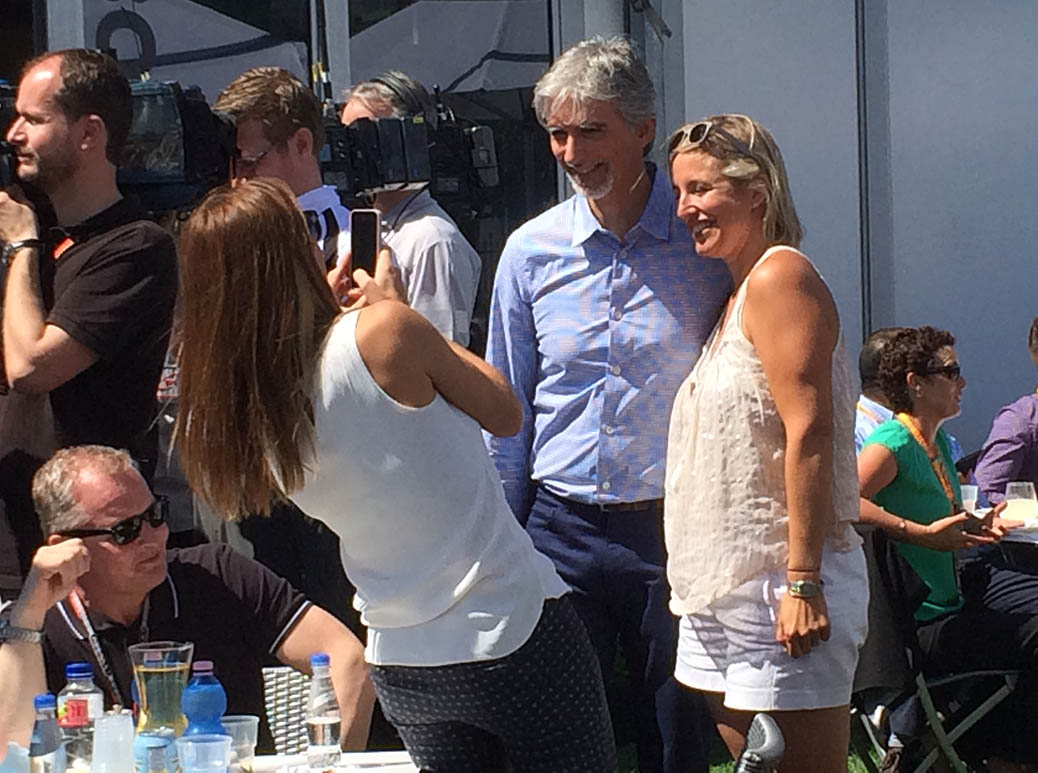
Ex-driver Damon Hill works the lane - with a few interviews, celeb selfies, and a bit of white-anting of Infiniti Red Bull Racing.
As I strolled up and down the lane teams' lane Thursday afternoon, ex-driver Damon Hill was giving a series of TV interviews. "The word around the lane is that Red Bull is on the back-foot," he told various TV interviewers (and it certainly was the word, as he repeated it over-and-over to interviewers).
I don't know about back foot (by the third qualifying Vettel was, uncharacteristically, out of the top 10, but his new team mate, Australian Daniel Ricciardo was second). But certainly the radical rule changes mean everything's up in the air this season. Each team had only around five months to build a new car more or less from scratch - and Red Bull got in a few test miles that it had hoped, and struggled at times during the Bahrain test rounds. Of course, completing a full race will be another matter entirely. After Bahrain, Vettel told media he would be surprised if half the 11 teams finish Sunday's race in Melbourne.
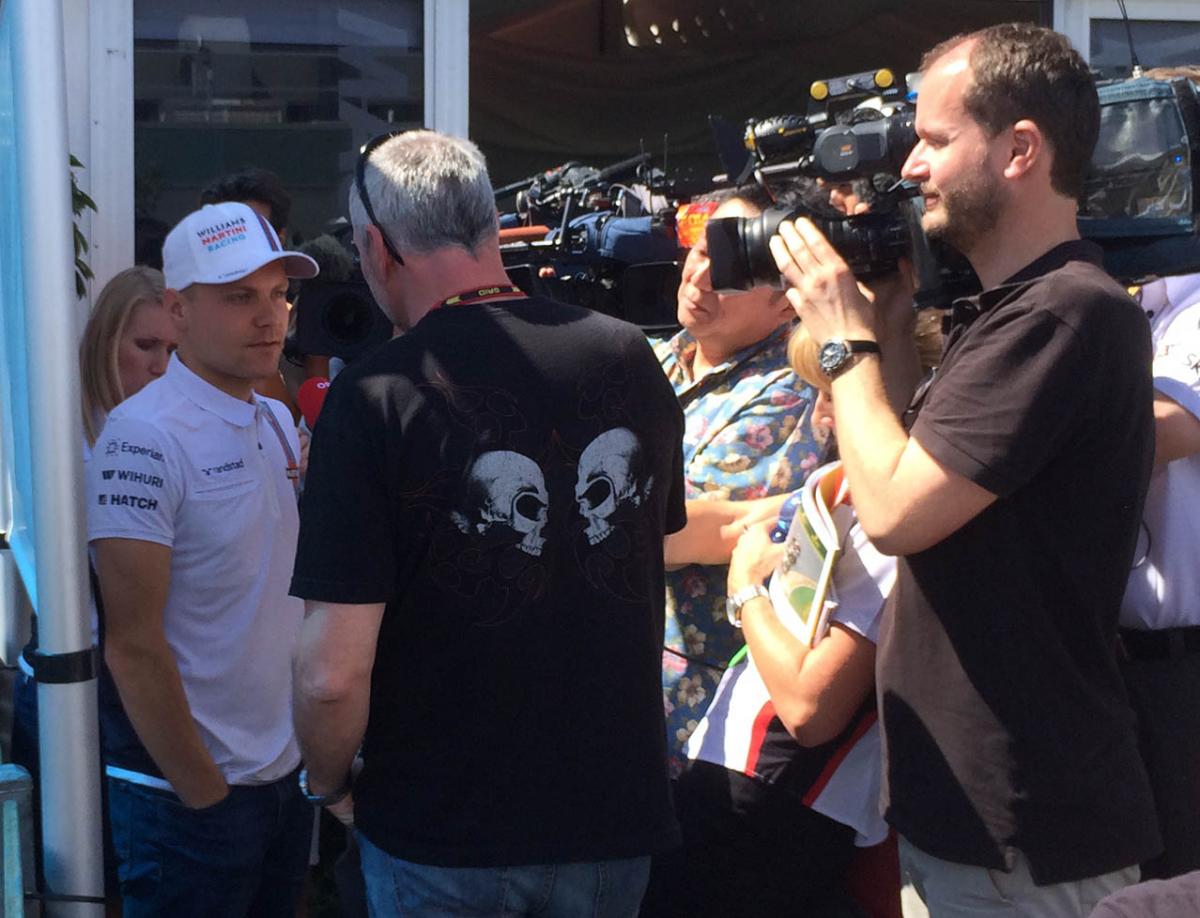
Modern rules around car weight, and total weight, favour the smaller man. A lot of the drivers look like jockeys these days. Pictured: Williams' driver Valtteri Bottas.
With each team effectively starting from a clean slate, and more complex cars than ever before, technology matters more than ever to F1.
Telematics are gathered in real time from each car. There's nothing flash about that these days. These days everyone from logging trucks to furniture movers have GPS tracking and real-time engine monitoring.
But with F1, we're talking an avalanche of data. Between the first practice session Thursday to the end of the race Sunday (it starts 5pm local time, 7pm NZT), around 100 gigabytes of data will be extracted.
Infiniti Red Bull travels with a crew of 60 (out of 600 staff total), and there are a dozen laptops and Surface tablets on site in Melbourne - around half for Team Red Bull, half for engine supplier Renault (it was an impressive setup, but, sorry, photos were banned in that part of the pit).

Members of the Ferrari crew, with their ever-present expresso shots, are straight from central casting.
It's a lot of grunt by normal computing standards, but not when you've got thousands of points of telematic data streaming through. Most of the data is crunched back at Infiniti Red Bull Racing's HQ in Milton Keynes in the UK, on an IBM supercomputer, or in Viry, France, where Renault's engineering team is based (Renault also supplies engines for Toro Rosso - also owned by Red Bull, plus Lotus and Caterham).
To get there, quickly and securely, the team relies on partner AT&T. AT&T operates globally - which is handy given F1 races span the US, Europe, Asia and Australia. Beyond its use of AT&T's network for critical data feeds, the Infiniti Red Bull Racing is planning to adopt AT&T's unified communication tools, mobile device management and security services later this year.
Red Bull's Milton Keynes setup includes a racing simulator, where a driver puts a virtual car through its paces. The idea is that with time being of the essence as tweaks are made between Thursday and race-day Sunday, tweaks can first be "road tested" in the virtual simulator. If they look promising, they can then be implemented in real-life back in Melbourne - with a battery of data then sent back to the UK for more analysis.
It isn't just about AT&T pushing complex virtual modeling data back and forth between the UK and Australia (something that happens more than usual at the temporary race track setup at Albert Park, Melbourne; in Europe, Red Bull travels with its "Treehouse", a mobile office a top an articulated truck full of geeks and computers).
There's also lower-tech - or more at least more straightforward communications going on. For example, some of the staff back in Milton Keynes simply monitor broadcast TV coverage - which, these days, includes superb slow motion footage of cars taking corners and the like. Quick video highlights of how Red Bull's cars are handling - or those of competitors - are forwarded to the team in Melbourne (or, where applicable, race referees). Again, this is bandwidth-thirsty stuff, and it's about to get thirstier. Peasland says his team is looking at utilising 4K (ultra high definition video), not so much for extra detail but so multiple high definition feeds can be displayed on the same screen.

Old school wheels on display in Melbourne: A car used by Sir Jack Brabham, the F1 champion in 1959, 1960 and 1966.
The small army of crew back in Milton Keynes doesn't just advise on pre-race tweaks. Engineers in the UK monitor scads of real-time technical data during the race, and actively advise on strategy during the race, such as when optimal time to come in for a tire change, or which bend to try and over-take.
With the new partial reliance on battery power, the remote team's contribution is more important than ever. Vettel and Ricciardo will be looking for read-time advice on when to conserve that precious 100kg of fuel, and when to push it.
"There's an increasing emphasis on ICT," Peasland says. "We've got to learn faster."
Will it pay off? It'll be an intriguing race on Sunday, and the season to come.
ABOVE: Infiniti Red Bull Racing junior driver Daniel Ricciardo explains this year's design changes.

Tire minders ... part of Infiniti Red Bull Racing's staff of 600 - 60 of whom are in Melbourne this weekend.
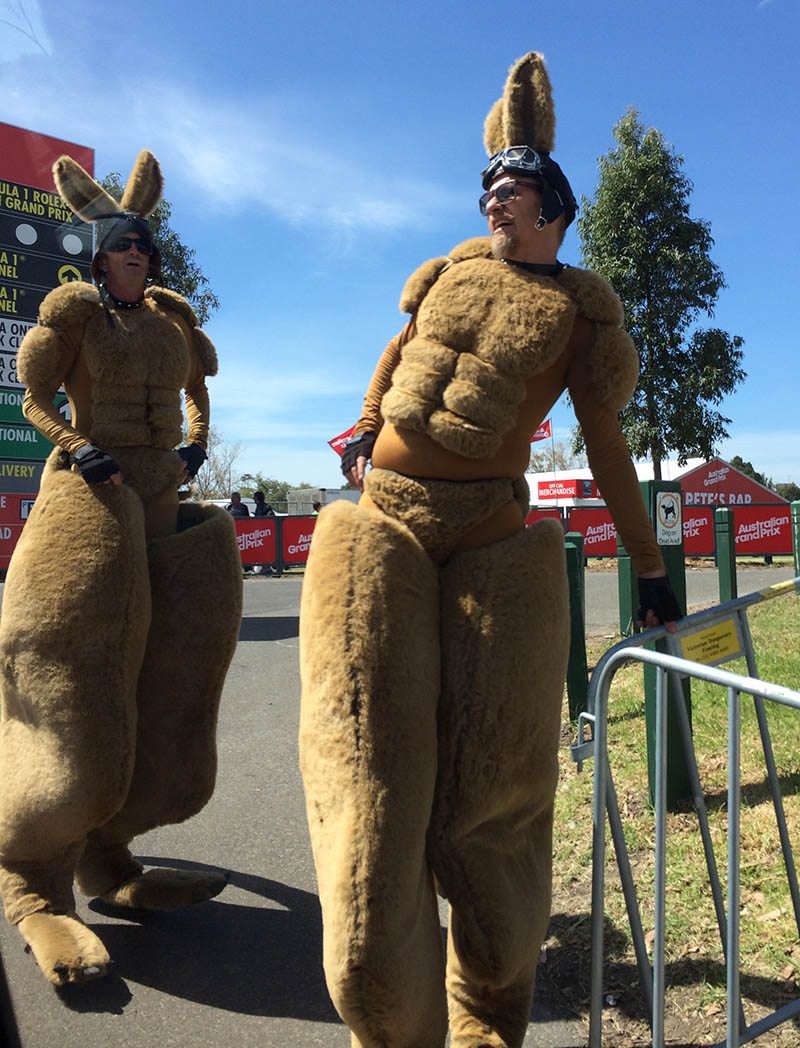
Not everyone understood the new design rules.
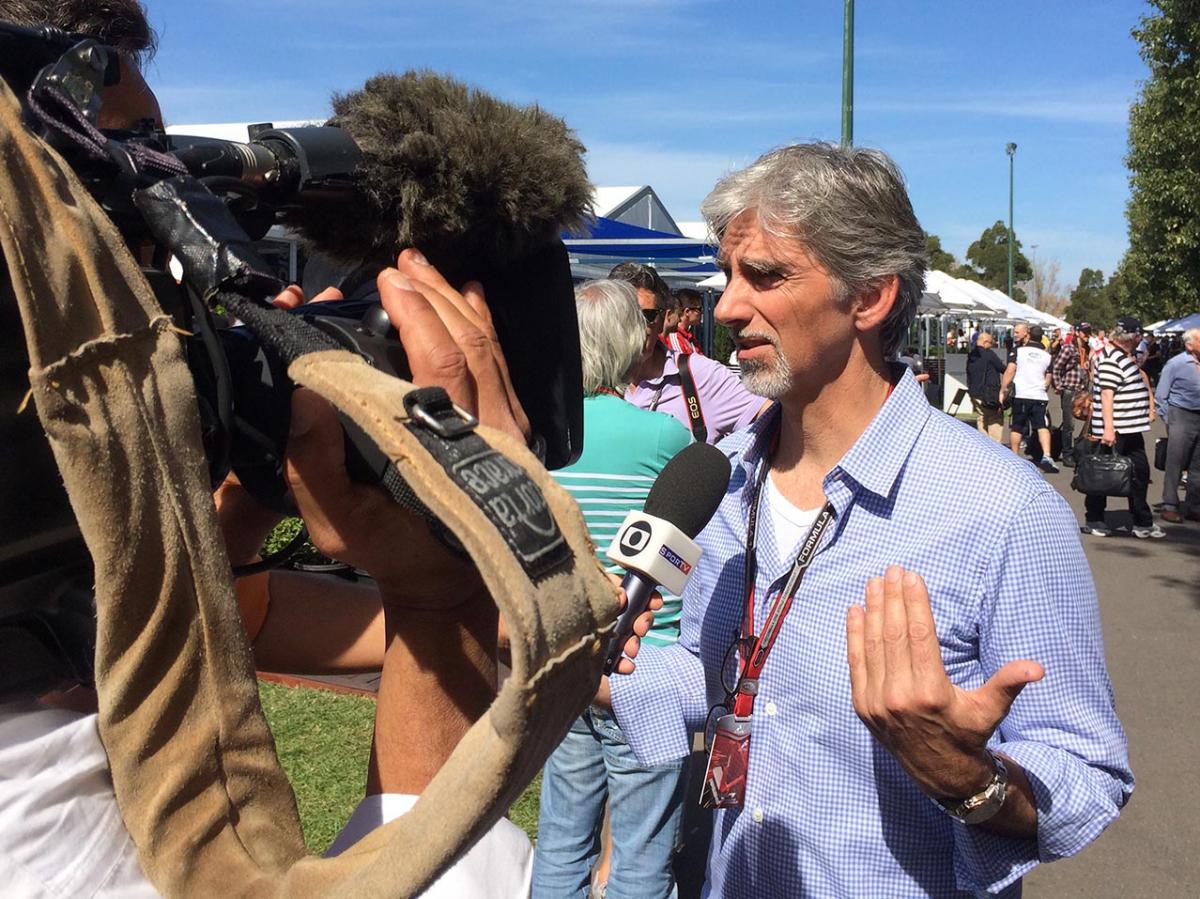
I'm just sayin' ...
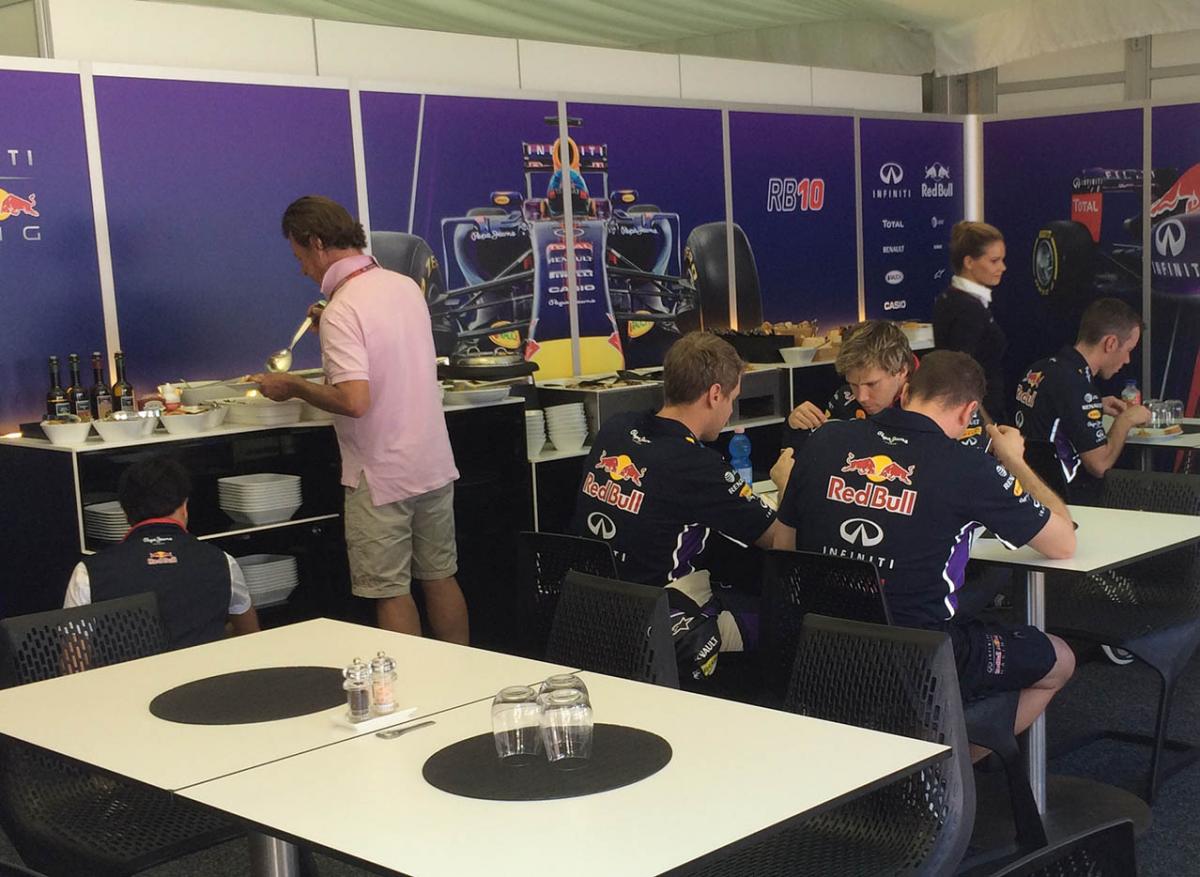
An EXCLUSIVE! photo of Sebastian Vettel (left, seated) eating lunch. Yes, he does quaff his sponsor's product.
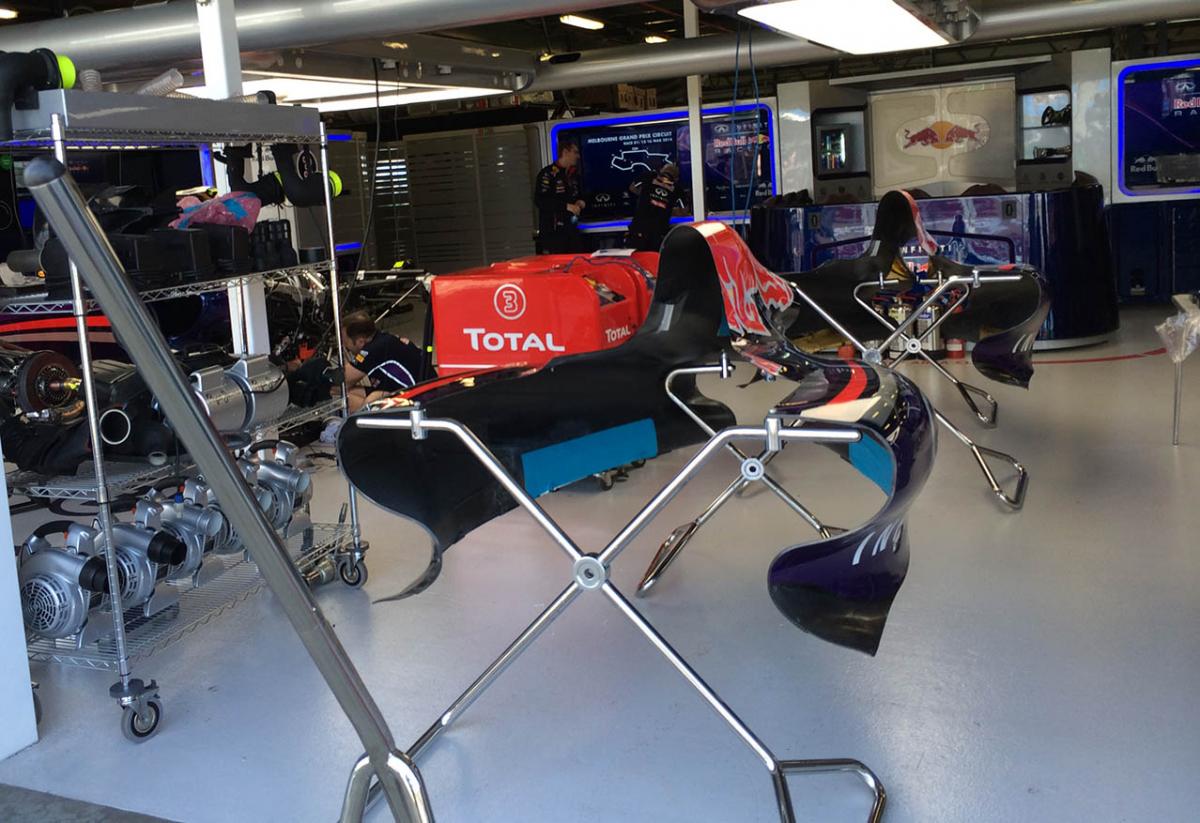
Sign up to get the latest stories and insights delivered to your inbox – free, every day.